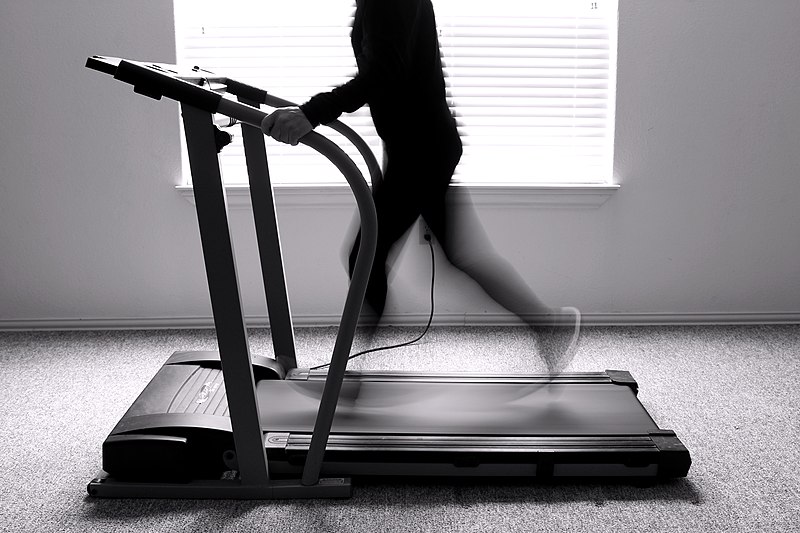SuperCoach’s Guide to the Personal Trainer Job Description: What Are Your True Responsibilities?
Trainer Guide
The personal trainer job description is more than just designing workouts, it’s about guiding clients toward lasting change. A great trainer is a mentor, motivator, and problem-solver, helping clients build sustainable habits for better health and fitness.
In this guide, we’ll uncover what truly defines a personal trainer job description, beyond the basics. Whether you’re just starting out or refining your skills, you’ll gain the tools to stand out and build a successful career.
Get ready to master the key responsibilities of an exceptional personal trainer!

1. Understanding Clients Inside and Out
As a personal trainer, your role goes far beyond crafting workouts. It starts with truly understanding the person in front of you, their history, aspirations, fears, and motivations, for instance: recovering from an injury, preparing for a competition, or simply feeling better in their everyday lives.
This is the foundation of effective personal training and one of the most critical aspects of the personal trainer job description. Your job is to uncover these details and tailor an experience that’s both motivating and achievable.
Think of yourself as a fitness detective, piecing together the puzzle of your client’s story to create a plan that resonates with their unique needs.
How to Dive Deep Into Client Histories and Goals
- Ask the Right Questions: During the initial consultation, dig into their “why.” Why have they decided to start now? What are their past experiences with fitness? What barriers have held them back before?
- Set Realistic Goals Together: Help clients define SMART (Specific, Measurable, Achievable, Relevant, Time-bound) goals that keep them focused without feeling overwhelmed.
Assessing Health and Physical Readiness
Before diving into any program, safety comes first. Health and readiness screenings aren’t just a formality, they’re an essential step in your process.
Ask yourself:
- Is this client ready for high-intensity work, or should we begin with foundational movements?
- Are there past injuries or conditions that require modifications?
- How can I make the first session feel safe, productive, and encouraging?
Tools and Techniques for Health Screening
- Conduct a PAR-Q (Physical Activity Readiness Questionnaire) to identify red flags.
- Assess mobility and flexibility to determine movement limitations.
- Check their baseline cardiovascular fitness through light, non-intimidating activities.
- Incorporate functional movement screens to spot imbalances or weaknesses.
This process isn’t just about prevention, it’s about creating a roadmap. When clients see that their plan is grounded in their individual needs, they’re more likely to stick with it.
This approach is what separates an average trainer from a SuperCoach-level trainer. It’s not about following a generic program; it’s about crafting a journey.
Every question you ask, every observation you make, and every adjustment you implement moves your client closer to their goals.

2. Designing Masterfully Tailored Programs
Crafting a fitness program isn’t just about choosing exercises; it’s about creating a roadmap that’s uniquely suited to each client, and this what actually makes building customized programs one of the key personal trainer job descriptions.
This is where personal trainers excel by acting as problem solvers and visionaries who understand that no two clients are the same. Whether someone’s goal is weight loss, muscle gain, or post-injury rehabilitation, the key to success lies in developing a plan that feels both achievable and inspiring.
Customized Fitness Engineering
The first step in creating a tailored program is understanding the “why” behind your client’s goals. Why do they want to lose weight? What does building muscle mean to them? Once you have that clarity, you can structure a program that aligns with their objectives while keeping it realistic and sustainable.
Here’s how experienced trainers approach this process:
- Focus on Individual Needs: Consider factors like fitness level, lifestyle, and available equipment. A stay-at-home parent working out in their living room needs a different strategy than a gym-goer with access to state-of-the-art equipment.
- Include Progression: Start with manageable exercises and gradually increase intensity as clients build strength and confidence.
Adapting to Life’s Changes
Life happens, and as a trainer, your job is to meet your clients where they are, not where they “should” be. Injuries, busy schedules, and even mental burnout can disrupt progress. The supercoach trainers know how to adjust in real time to ensure the client stays on track without feeling defeated.
When challenges arise:
- Modify, Don’t Pause: If a client has a minor injury, focus on areas they can train safely. For example, if they’ve injured their wrist, prioritize lower body exercises or cardio.
- Be Flexible with Scheduling: If a client’s life gets hectic, work with them to find shorter or more efficient training sessions that fit their new routine.

3. Delivering Unforgettable Training Sessions
As a personal trainer, your sessions are the heart of your service. They’re where all the planning, assessments, and goal-setting come to life. But it’s not just about showing up with a workout plan, it’s about delivering an experience that clients won’t forget.
Session Strategy for Maximum Impact
Every session should have a clear structure and purpose. Clients need to feel that their time is being used effectively, and as their trainer, it’s your job to ensure they leave each session feeling accomplished.
Here’s how to structure impactful sessions:
- Warm-Up with Intention: Start with dynamic movements that prepare the body for the day’s focus. Whether it’s mobility drills or light cardio, the warm-up sets the tone for the workout.
- Incorporate Progression: Gradually increase the difficulty of exercises over time, showing clients how far they’ve come.
- End on a High Note: Finish with a cooldown that leaves clients feeling energized, not exhausted. This can include stretching, deep breathing, or a quick reflection on what they achieved that day.
The structure of your sessions should align with the client’s goals while also surprising them with new challenges and techniques. Routine is great for progress, but monotony is a motivation killer.
Engaging and Inspiring Every Step of the Way
A truly unforgettable training session isn’t just about the workout—it’s about how you connect with your client.
So, How do you keep clients motivated and engaged?
- Personalized Cues: Tailor your instructions to match how your client learns best. Some clients need verbal cues; others respond better to physical demonstrations or analogies.
- Real-Time Adjustments: Pay attention to your client’s form, energy levels, and feedback during the session. If they’re struggling with an exercise, adjust the weight or modify the movement to keep the session flowing.
- Celebrate Small Wins: Whether it’s hitting a personal best or completing a challenging set, acknowledging progress keeps clients motivated and focused on their goals.
Motivation isn’t a one-size-fits-all strategy. Some clients respond to enthusiastic praise, while others may appreciate a calm and steady demeanor. Knowing your client’s personality and what drives them is essential for creating a supportive and inspiring environment.

4. Monitoring and Measuring Your Client Progress
Being a personal trainer isn’t just about designing workouts and cheering clients on—it’s about delivering results.
This is where you step into the role of a data-driven coach, using measurable benchmarks to track success and fine-tune strategies
How to be a Data-Driven Coach
Tracking progress isn’t a one-size-fits-all process. Every client has unique goals, which means you need to identify benchmarks that align with what they want to achieve. Are they looking to lose weight? Build strength? Improve endurance? Whatever the goal, having clear, measurable metrics is essential.
Here’s how expert trainers track client progress:
- Body Composition: Regularly measure weight, body fat percentage, and muscle mass. Tools like calipers, body scans, or even simple tape measurements can provide valuable insights.
- Strength Metrics: Track improvements in key lifts or exercises. For example, how much more weight can a client squat or bench press compared to when they started?
- Endurance Levels: Use timed challenges like a one-mile run or a specific number of burpees in a set time to gauge cardiovascular improvement.
- Flexibility and Mobility: Measure progress in range of motion with simple assessments like the sit-and-reach test or shoulder flexibility drills.
Time For A Solution: Course Corrections
Even the best-laid plans encounter obstacles. Maybe a client’s progress has stalled, they’ve hit a plateau, or life circumstances have made it harder for them to stay consistent.
Here’s how to handle challenges like a pro:
- Identify the Issue: Is the client struggling with consistency? Have they been skipping workouts? Or is the current program no longer effective?
- Adjust the Plan: If progress has plateaued, tweak the routine. Introduce new exercises, increase intensity, or change the rep and set scheme.
- Address Lifestyle Factors: Sometimes the problem isn’t in the gym. A client’s sleep, stress, or nutrition could be the culprit. Work with them to make realistic changes outside of training sessions.
- Celebrate Small Wins: When progress slows, it’s crucial to highlight the small victories. Did their form improve? Are they recovering faster? These are achievements worth recognizing.

5. Providing Holistic Health Guidance
Being a personal trainer is about more than just workouts—it’s about helping clients build a healthier lifestyle. Acting as a wellness partner, you guide them toward habits that support their goals outside the gym. From proper nutrition to managing stress, your role extends into their daily lives, creating a well-rounded approach to health.
The Wellness Partner
Clients often look to trainers for more than fitness advice. While you may not be a dietitian or therapist, you can provide general guidance that complements their fitness journey:
- Nutrition: Encourage balanced meals with plenty of whole foods, protein, and healthy fats. Offer simple tips like meal prepping or limiting processed foods.
- Sleep: Explain how quality rest supports muscle recovery and overall well-being, and suggest ways to improve sleep hygiene, such as maintaining a consistent schedule or reducing screen time before bed.
- Hydration: Remind clients of the importance of staying hydrated, especially during intense training. Aiming for adequate water intake is a small habit with big results.
- Stress Management: Suggest practices like mindfulness, yoga, or even deep breathing exercises to help clients manage life’s pressures.
These elements tie directly into their fitness progress, showing clients that health is more than just what happens in the gym.
Beyond the Gym
Building a healthier lifestyle means looking at the bigger picture. Encourage clients to adopt small, actionable habits that align with their fitness goals:
- Active Commuting: Walking or biking to work can easily add extra activity to their day.
- Meal Prepping: Taking time to prepare nutritious meals reduces the temptation of fast food and helps them stay on track.
- Mindfulness Practices: Simple activities like meditation or journaling can improve focus and reduce stress, which benefits their fitness journey.

6. Safety First, Results Second
As a personal trainer job description, ensuring your clients’ safety isn’t just a priority, it’s a responsibility! Progress means nothing if an injury sets a client back, and creating a safe training environment is the foundation for long-term success.
The Injury Shield: How to set up?
Every client comes with unique risk factors, whether it’s a previous injury, physical limitations, or inexperience with exercise. Your job is to identify these risks and adjust their training accordingly.
- Assess Before You Progress: Conduct thorough evaluations to understand their movement patterns and identify weaknesses or imbalances.
- Preventive Measures: Incorporate exercises that strengthen vulnerable areas, such as core work to protect the lower back or mobility drills to improve joint stability.
- Technique First: Emphasize proper form above all else. Reinforce it consistently, especially as clients lift heavier or tackle more complex movements.
Just in Case, Always Be Ready
Despite the best precautions, emergencies can happen. Being prepared to handle them is a vital part of a personal trainer’s job description.
- First-Aid Knowledge: Ensure you’re certified in CPR and basic first aid, so you’re ready to act in case of an accident.
- Situational Awareness: Stay alert during every session, paying attention to how clients move, their energy levels, and any signs of discomfort or fatigue.
- Communicate Boundaries: Let clients know it’s okay to speak up if something feels wrong.

7. Becoming a Trusted Advisor
In the fitness world, trust is everything. As one of the personal trainer job description, your ability to connect with clients on a personal level is what transforms a transactional relationship into a lasting partnership. By becoming a trusted advisor, you create a supportive, judgment-free space where clients feel seen, heard, and valued.
- Foster Trust: Be approachable and consistent. Clients need to know they can rely on you, not just for their workouts but as someone who genuinely cares about their well-being.
- Celebrate the Small Things: Acknowledge their efforts, no matter how small. Whether it’s showing up for a session or nailing a new movement, recognizing progress builds confidence and reinforces their commitment.
- Stay Judgment-Free: Everyone starts somewhere. Avoid comparisons or negativity. Instead, focus on growth and creating a positive experience.
- Active Listen Actively to Your Clients: To be a trusted advisor, you need to listen actively—not just to what clients say, but to what they don’t.
- Ask the Right Questions: Go beyond surface-level goals. Why do they want to get fit? What challenges have they faced in the past?
- Pay Attention to Nonverbal Cues: Body language and tone can reveal a lot. A hesitant “yes” or a dropped gaze might signal discomfort or doubt.
- Empathize, Don’t Just Advise: Show you understand where they’re coming from. Sometimes, clients don’t need solutions, they need someone to acknowledge their feelings.

8. Handling Administrative Excellence
A great personal trainer isn’t just skilled in the gym—they’re also a pro at managing the behind-the-scenes work that keeps everything running smoothly. Administrative excellence is the backbone of a successful personal training career, and mastering it ensures you deliver a seamless, professional experience for your clients. From efficient scheduling to detailed record-keeping, these organizational skills set you apart as a true professional.
The Organized Pro
Your ability to stay organized directly impacts the client experience. When scheduling is clear, payments are hassle-free, and records are up to date, clients see you as reliable and committed to their success.
- Efficient Scheduling: Create a system that works for you and your clients, whether it’s using scheduling software, syncing calendars, or setting clear cancellation policies. This saves time and avoids confusion.
- Detailed Client Records: Keep notes on each client’s progress, preferences, and challenges. Tracking this information helps you tailor sessions and shows clients you’re invested in their journey.
- Seamless Payments: Streamline the billing process with automated tools or payment platforms to eliminate awkward conversations about money and maintain professionalism.
- Apps and Tools: Use fitness apps or online platforms to track workouts, progress, and goals. This gives clients a clear view of their achievements and next steps.
- Regular Check-Ins: Whether it’s a quick text, email, or in-app message, staying in touch between sessions reminds clients that you’re there to support them.
- Progress Reports: Share updates on their improvements, like increases in strength, weight changes, or better endurance. This reinforces the value of your training and keeps them motivated.
A well-organized trainer stands out. When clients see that you’re not only focused on their fitness but also on providing a professional, reliable experience, it strengthens their trust in you.
Administrative excellence may not be the most glamorous part of the job, but it’s one of the most important. It creates a foundation of consistency and accountability, ensuring that clients feel valued and supported every step of the way. That’s the mark of a true SuperCoach.

